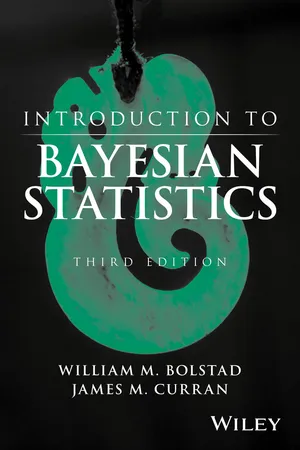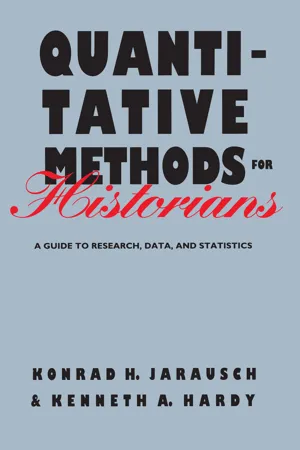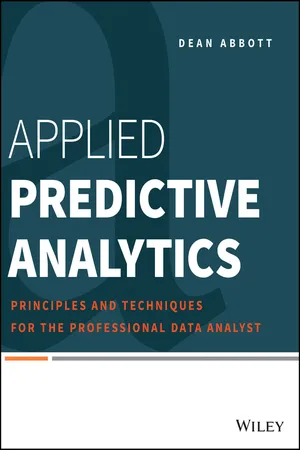Mathematics
Single Variable Data
Single variable data refers to a set of data that involves only one characteristic or attribute. In mathematics, this typically involves a single quantity or measurement, such as height, weight, or temperature. Analyzing single variable data often involves calculating measures of central tendency, dispersion, and constructing graphical representations like histograms or box plots to understand the distribution of the data.
Written by Perlego with AI-assistance
Related key terms
8 Key excerpts on "Single Variable Data"
- eBook - ePub
An MBA in a Book
Everything You Need to Know to Master Business - In One Book!
- Xander Cansell(Author)
- 2023(Publication Date)
- Arcturus(Publisher)
ONE VARIABLE STATISTICStatistics allow you to analyze and describe data in different ways.By accurately describing and analyzing datasets you can determine details and better interpret data. This helps you make better-informed business decisions, or to calculate the likelihood of different future events occurring.One variable analysis is the simplest way of analyzing statistical data. It describes but does not take into account causes or relationships between data. For example, if you were interested in the scores of students who took an exam, you might be interested in how varied the results are.You can use single variable statistics to make summaries of the data, which give you a series of key metrics that measure the performance of the whole group that took the exam. The most basic of these are mean, median and mode. These are sometimes called central tendencies .Mean is the average of all the results – the total of all the exam results added together and divided by the number of students who took the exam.The median is the result that lies in the middle of all the exam scores when they are in ascending or descending order. This is more useful than the mean when there are outliers in the data that might skew the results (if one student gets 100% but all the others get between 40–50%, the mean will be skewed higher by that single result).The mode is the most frequently occurring number in the dataset. The mode of the series 5, 2, 5, 3, 2, 2 would be 2 because it occurs more than any number.Examiners compare overall exam results to achieve a mean, while judges at a dog show assess against agreed physical standards.Standard deviation
Standard deviation is a measure of how spread-out numbers in a dataset are. It is usually represented by the symbol σ (the Greek letter sigma).The formula for standard deviation is the square root of the variance. Variance in this instance is the average of the squared differences from the mean. - eBook - ePub
- William M. Bolstad, James M. Curran(Authors)
- 2016(Publication Date)
- Wiley(Publisher)
CHAPTER 3 DISPLAYING AND SUMMARIZING DATAWe use statistical methods to extract information from data and gain insight into the underlying process that generated the data. Frequently our data set consists of measurements on one or more variables over the experimental units in one or more samples. The distribution of the numbers in the sample will give us insight into the distribution of the numbers for the whole population.It is very difficult to gain much understanding by looking at a set of numbers. Our brains were not designed for that. We need to find ways to present the data that allow us to note the important features of the data. The visual processing system in our brain enables us to quickly perceive the overview we want, when the data are represented pictorially in a sensible way. They say a picture is worth a thousand words. That is true, provided that we have the correct picture. If the picture is incorrect, we can mislead ourselves and others very badly!3.1 Graphically Displaying a Single Variable
Often our data set consists of a set of measurements on a single variable for a single sample of subjects or experimental units. We want to get some insight into the distribution of the measurements of the whole population. A visual display of the measurements of the sample helps with this.EXAMPLE 3.1In 1798 the English scientist Cavendish performed a series of 29 measurements on the density of the Earth using a torsion balance. This experiment and the data set are described by Stigler (1977). Table 3.1 contains the 29 measurements.Table 3.1Earth density measurements by Cavendish5.50 5.61 4.88 5.07 5.26 5.55 5.36 5.29 5.58 5.65 5.57 5.53 5.62 5.29 5.44 5.34 5.79 5.10 5.27 5.39 5.42 5.47 5.63 5.34 5.46 5.30 5.75 5.68 5.85 Dotplot
A dotplot is the simplest data display for a single variable. Each observation is represented by a dot at its value along horizontal axis. This shows the relative positions of all the observation values. It is easy to get a general idea of the distribution of the values. Figure 3.1 - eBook - ePub
Quantitative Methods for Historians
A Guide to Research, Data, and Statistics
- Konrad H. Jarausch, Kenneth A. Hardy(Authors)
- 2016(Publication Date)
- The University of North Carolina Press(Publisher)
Statistics for Questions about One VariableT he first step in any statistical analysis is to examine the values of each individual variable. This process is often called performing a univariate descriptive analysis . There are good reasons for starting with one variable at a time. First, since virtually all statistical analyses are now accomplished with a computer-based statistical package, an examination of the values of individual variables serves as an important check on the accuracy with which the data were recorded and entered into the statistical program. If impossible and improbable values or too many missing codes for a variable are found, the problem cases should be corrected before proceeding any further, since subsequent calculations will be flawed. Second, many useful research questions can be adequately answered by carefully examining only a single variable. These include:1. What values from the range of possible values for a variable do the cases in the data take on? 2. What are the most common values for this variable? 3. What is the typical value for this variable? 4. How varied or concentrated are the values of this variable? 5. Are there any impossible or unusually high or low values of this variable?If, for example, the historian wants to ascertain the average tonnage of freight shipped from a certain seaport during a particular period of time, a univariate analysis of a variable measuring shipments may be all that is required. Third, a knowledge of the values of individual variables is a necessary precondition for any intelligent investigation into the possible relationships among them.DESCRIPTIVE STATISTICS
UNIVARIATE CATEGORICAL
Categorical variables generally take on a limited number of values, often less than 5 and seldom more than 10. Therefore, a frequency distribution is usually employed to examine the values of a categorical variable. A frequency distribution is constructed by simply counting how often each value of a variable appears in the data and representing the result in tabular form. Table 7.1 presents a frequency distribution for the values of the variable occupational category for the complete data set introduced in table 6.1 - eBook - ePub
Applied Predictive Analytics
Principles and Techniques for the Professional Data Analyst
- Dean Abbott(Author)
- 2014(Publication Date)
- Wiley(Publisher)
Categorical variables have a limited number of values whose intent is to label the variable rather than measure it. Examples of categorical variables include State, Title Code, SKU, and target variables such as Responder. Categorical variables are sometimes called nominal variables or discrete variables. Flag variables or binary variables are often used as names for categorical variables having only two values, like Gender (M,F), responses to questions (Yes and No), and dummy variables (1 and 0).Single Variable Summaries
After data has been loaded into any software tool for analysis, it is readily apparent that for all but the smallest data sets, there is far too much data to be able to make sense of it through visual inspection of the values.At the core of the Data Understanding stage is using summary statistics and data visualization to gain insight into what data you have available for modeling. Is the data any good? Is it clean? Is it representative of what it is supposed to measure? Is it populated? Is it distributed as you expect? Will it be useful for building predictive models? These are all questions that should be answered before you begin to build predictive models.The simplest way to gain insight into variables is to assess them one at a time through the calculation of summary statistics, including the mean, standard deviation, skewness, and kurtosis.Mean
The mean of a distribution is its average, simply the sum of all values for the variable divided by the count of how many values the variable has. It is sometimes represented by the Greek symbol mu, μ.The mean value is often understood to represent the middle of the distribution or a typical value. This is true when variables match a normal or uniform distribution, but often this is not the case.Standard Deviation
The Standard Deviation measures the spread of the distribution; a larger standard deviation means the distribution of values for the variable has a greater range. Most often in predictive modeling, the standard deviation is considered in the context of normal distributions. The Greek symbol sigma, - eBook - ePub
Quantitative and Statistical Data in Education
From Data Collection to Data Processing
- Michel Larini, Angela Barthes(Authors)
- 2018(Publication Date)
- Wiley-ISTE(Publisher)
2 Elementary Descriptive Statistics and Data Representation2.1. Tables and graphic representations
The goal of descriptive statistics is to make the dual-input individual/variable [I/V] table legible, directly generated from the data readings. It uses different approaches (specific tables, graphs, curves, mathematical indicators). Beyond simple presentation of the results, it must enable the users to comment on those results, formulate hypotheses and even draw conclusions in relation to the sample or samples studied. This part is known as elementary descriptive statistics, as opposed to multivariate analyses, presented in Chapter 4 , which are based on more complex processing, but which can also be considered descriptive statistics.Before going onto the presentation, it is worth clarifying a few concepts relating to the objects of research and the concept of a variable.2.1.1. Population, sample and individualsResearchers are interested in individuals (subject, object, etc.) belonging to a population. The term “individual” must be understood, here, in the sense of a statistical unit. The population is a set, comprising a large number of individuals, considered to form a whole. That whole may be different in nature depending on the problem at hand – for example “Europeans”, “French people”, “Marseille residents”, “Swiss students” and so forth. Most of the time, researchers cannot possibly have access to the whole of the population, so must be content with working on a sample, of a reasonable size, made up of individuals selected from within the population. The selection of individuals for a sample is crucially important, because this choice may influence the nature of the results; this is a topic which was discussed in the first chapter, and an issue which shall be illustrated throughout this book.We often have to compare samples to one another, and two situations may arise. The first is to compare samples composed of different individuals at the same time; in this case, we say that we are dealing with independent samples. The second occurs when the samples are made up of the same individuals to whom the questions have been put, before and after one or more actions; in this case, we wish to measure the effect of the action, and say that we have two matched samples. We then speak of longitudinal analysis. - eBook - ePub
- Bruce J. Chalmer(Author)
- 2020(Publication Date)
- CRC Press(Publisher)
3Describing Data for a Single Variable
3.1 There are many ways of summarizing a set of data.
In Chapter 1 we discussed the distinctions between a sample and a population and between a statistic and a parameter. We considered the ideas of systematic bias and randomization and mentioned some techniques used in selecting random samples. In Chapter 2 we discussed how we can use information from samples (statistics) to draw inferences about population characteristics (parameters). We saw how knowledge of the sampling distribution of our statistic allows us to say how certain we are about our conclusions.In our examples up to now, our parameter of interest has been either a proportion (indicating how prevalent some characteristic is in the population) or an average (indicating how large the scores on some variable tend to be in the population). But as we have noted previously, the concepts we have been discussing can be used to draw inferences about any type of parameter. In this chapter we begin our discussion of various types of parameters and the statistical methods used to draw inferences about them.There are many types of parameter, with each type describing a particular characteristic of the population. Sometimes we can summarize a great deal of information about a population in just a few parameters, at least approximately. This capability is what makes statistical analysis so useful. In this chapter we consider techniques for describing a population in terms of a single variable. Later chapters deal with situations involving several variables or several populations.3.2 Often we are interested in the entire population distribution.
The population distribution
The population distribution for some variable is simply the proportion of individuals with each possible score on the variable. As we have already seen, a histogram is a picture of a distribution. Everything we ever want to know about a variable in a population is contained in the population distribution. - eBook - ePub
- Michel Jambu(Author)
- 1991(Publication Date)
- Academic Press(Publisher)
Chapter 31-D Statistical Data Analysis
Michel Jambu1 Introduction
A statistical series resulting from numerous observations needs to be summarized in a small set of numbers so that one can compare several series and understand them easily. A summary can be numerical or graphical:numerical: each numerical summary highlights a specific feature of a series. It is affected by the point of view of the statistician.graphical: graphics indicate more than numerical summaries, from which they are generally derived.Most of the time, graphical and numerical summaries are used simultaneously, and they are both studied for the following types of variables: quantitative, qualitative, multiple form qualitative, and chronological.2 1-D Analysis of a Quantitative Variable
As an example, consider the series from the data set of prices of cars. (cf . Appendix 2 , §1). How can one summarize this series? A statistician can study it from three points of view:1.What are the most representative values of the data set in terms of local concentration ?2.What are the most representative values of the data set in terms of dispersion ?3.We study these three points of view successively.What are the most representative values of the data set in terms of shape ?2.1 Measures of Central Tendency
Our aim is to characterize a statistical series by a single number (a type-value), representing the order of magnitude of the whole set of numbers, so that we may compare two series by comparing their type-values. The type-value should satisfy the conditions given by Yule (1950) :1. The type-value must be defined independently of the observer, and independently of the conditions under which the observations were taken.2. The type-value must depend on all the values of the series. In particular, values considered as exceptional or irrelevant must be integrated when computing the type-value. - eBook - ePub
Statistics in Engineering
With Examples in MATLAB® and R, Second Edition
- Andrew Metcalfe, David Green, Tony Greenfield, Mayhayaudin Mansor, Andrew Smith, Jonathan Tuke(Authors)
- 2019(Publication Date)
- Chapman and Hall/CRC(Publisher)
3 Graphical displays of data and descriptive statisticsWe consider how to take a sample so that it is likely to be a fair representation of the population from which it is drawn. You will learn how to present data using diagrams and numerical summary measures. In some applications the time order of the observations is particularly relevant, and we refer to the data as a time series. We consider a descriptive approach that describes a time series as a combination of a trend, seasonal effects and an random component.3.1 Types of variablesConsider a set of items, and define a variable as a feature of an item which can differ from one item to the next. Variables that are measured on a numerical scale can conveniently be classified as discrete or continuous. Discrete variables are usually a count of the number of occurrences of some event and are therefore non-negative integers {0, 1, 2, …}. Continuous variables such as mass, temperature and pressure are measured on some underlying continuous scale.Other variables provide a verbal rather than a numerical description, and are referred to as categorical variables. If the categories of a categorical variable can be placed in some relevant order it is referred to as an ordinal variable.We illustrate the use of these terms in the following six examples. Example 3.1: Integrated circuit chips [discrete variable]A typical very-large-scale integrated circuit chip has thousands of contact windows, which are holes of 3.5 microns diameter etched through an oxide layer by photolithography. A window is defective (closed) if the hole does not pass through the oxide layer. A factory produces wafers that contain 400 chips, arranged in four sectors that are referred to as north, east, south and west. There is a test pattern of 20 holes systematically located within each sector. A robot records the number of closed windows in each test pattern. The number of closed windows is a discrete variable that can take any integer value between 0 and 20. A sector is scrapped if any closed windows are found in the test pattern.
Index pages curate the most relevant extracts from our library of academic textbooks. They’ve been created using an in-house natural language model (NLM), each adding context and meaning to key research topics.







